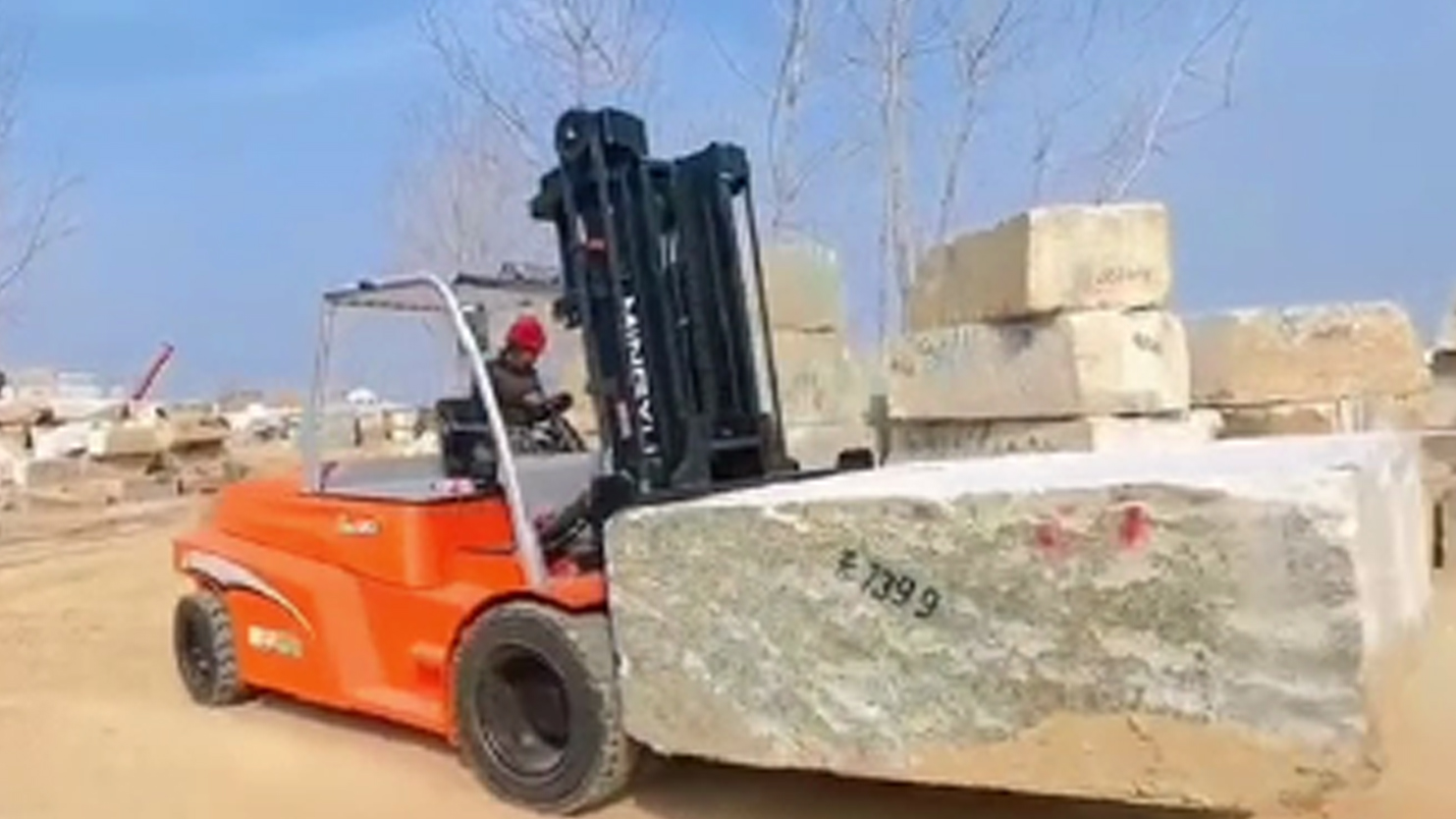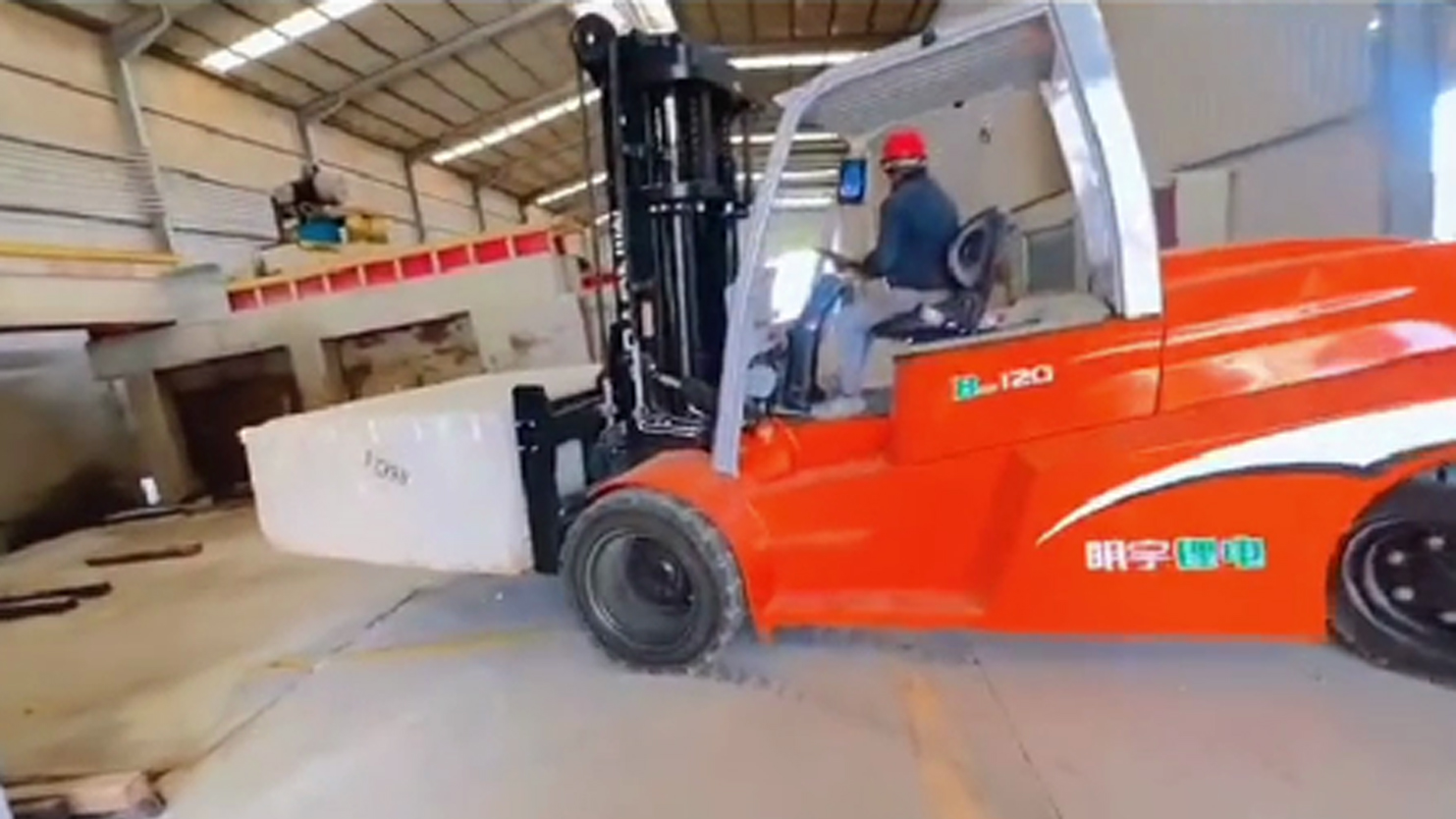I. Introduction
A. Hook: "Picture a rugged construction site, where heavy loads need to be moved across uneven terrain, or a sprawling agricultural field, where materials are transported in all weather conditions. Traditionally, diesel-powered forklifts have been the mainstay in such environments. However, as environmental concerns grow and technology advances, the demand for cleaner, more efficient solutions is surging. The question arises: can electric forklifts handle the challenges of off-road operations?"
B. Briefly introduce off-road forklifts and their typical applications: "Off-road forklifts are designed to operate in challenging terrains, handling heavy loads in industries like construction, agriculture, forestry, and mining. Their robust build and powerful engines enable them to navigate rough surfaces and demanding conditions."
C. State the article's purpose: to explore the availability and benefits of electric off-road forklifts: "This article aims to explore whether electric off-road forklifts are a viable alternative, examining their availability, advantages, technological advancements, and the challenges associated with their adoption."
D. Outline the article's structure: availability, advantages, technology, challenges, and future outlook: "We will delve into the current market availability, analyze the key advantages of electric models, examine the underlying technologies, discuss the challenges and considerations, and provide a future outlook on this evolving segment of the forklift industry."
II. Availability of Electric Off-Road Forklifts
A. Current Market Overview:
"While the electric off-road forklift market is still developing, several manufacturers are now offering viable electric models. These companies are focusing on providing robust machines capable of handling demanding applications. Regional availability varies, with increasing adoption in areas with strong environmental regulations."
Manufacturers offering electric off-road models.
Regional availability and distribution.
B. Types and Specifications:
"Electric off-road forklifts are available with varying battery capacities, offering different operating ranges to suit specific needs. Lifting capacities are comparable to diesel models, with some electric models capable of handling heavy loads. Comparisons with traditional models highlight the differences in power delivery and maintenance requirements."
Battery capacities and operating ranges.
Lifting capacities and terrain capabilities.
Comparison with traditional diesel/gas models.
C. Case Studies and Real-World Examples:
"Early adopters in agriculture and construction are reporting positive experiences with electric off-road forklifts. Case studies demonstrate their effectiveness in reducing emissions and noise, while maintaining operational efficiency. These examples highlight the growing acceptance and practical applications of electric models."
Applications in agriculture, construction, and forestry.
User experiences and early adoption trends.
III. Key Advantages of Electric Off-Road Forklifts
A. Environmental Benefits:
"Electric forklifts produce zero emissions, significantly reducing the carbon footprint of off-road operations. Noise reduction is another significant advantage, creating a more comfortable and less disruptive working environment."
Zero emissions and reduced carbon footprint.
Noise reduction and improved working conditions.
B. Operational Cost Savings:
"Electricity is generally cheaper than diesel fuel, leading to significant energy cost savings. Reduced maintenance requirements, due to fewer moving parts, further contribute to lower operating costs."
Lower energy costs (electricity vs. fuel).
Reduced maintenance requirements and costs.
C. Performance and Efficiency:
"Electric motors provide instant torque, offering improved maneuverability and responsiveness. Regenerative braking recaptures energy, enhancing efficiency and extending battery life."
Instant torque and improved maneuverability.
Regenerative braking and energy efficiency.
D. Enhanced Operator Comfort and Safety:
"Reduced vibration and noise create a more comfortable working environment for operators. Improved visibility and precise control enhance safety, reducing the risk of accidents."
Reduced vibration and noise.
Improved visibility and control.
E. Versatility and Adaptability:
"Electric forklifts can operate both indoors and outdoors, providing greater versatility. The absence of flammable fuel reduces fire hazards, enhancing safety in various applications."
Operation in indoor and outdoor environments.
Reduced fire hazard.
IV. Technology and Innovation
A. Battery Technology and Charging Infrastructure:
"Advances in lithium-ion battery technology are increasing energy density and reducing charging times. Fast-charging and opportunity charging options enable continuous operation. On-site and off-site charging solutions provide flexibility for various applications."
Lithium-ion battery advancements.
Fast-charging and opportunity charging options.
On-site and off-site charging solutions.
B. Drivetrain and Motor Systems:
"Electric motors offer high efficiency and precise power delivery. All-wheel drive and traction control systems enhance maneuverability and stability in challenging terrains."
Electric motor efficiency and power delivery.
All-wheel drive and traction control systems.
C. Control Systems and Telematics:
"Real-time performance monitoring provides valuable data for optimizing operations. Remote diagnostics and data analysis enable proactive maintenance and troubleshooting."
Real-time performance monitoring.
Remote diagnostics and data analysis.
D. Durability and Weatherproofing:
"Electric off-road forklifts are designed to withstand harsh environments. Robust construction and weatherproofing protect against dust, moisture, and extreme temperatures."
Design considerations for harsh environments.
Protection against dust, moisture, and extreme temperatures.
V. Challenges and Considerations
A. Initial Investment Costs:
"Electric forklifts typically have a higher initial purchase price compared to traditional models. ROI analysis should consider long-term operating cost savings and environmental benefits."
Comparison with traditional forklift costs.
Return on investment (ROI) analysis.
B. Battery Life and Operating Range:
"Battery performance can be affected by extreme temperatures and heavy workloads. Careful planning and battery management are essential. Limitations in operating range may require strategic charging locations."
Factors affecting battery performance.
Limitations in extreme conditions.
C. Charging Infrastructure Development:
"Availability of charging stations in remote locations can be a challenge. Grid capacity and power supply considerations are crucial for large-scale adoption."
Availability of charging stations in remote locations.
Grid capacity and power supply considerations.
VI. Future Outlook and Conclusion
A. Trends in Electric Off-Road Equipment:
"The electric off-road equipment market is experiencing rapid growth, driven by increasing environmental awareness and technological advancements. Innovations in battery technology and charging infrastructure will further enhance the viability of electric models."
Increasing adoption and market growth.
Technological advancements and innovations.
B. Government Incentives and Regulations:
"Government incentives and environmental regulations are driving the adoption of electric vehicles, including off-road forklifts. Support for electric vehicle adoption will further accelerate market growth."
Impact of environmental policies.
Support for electric vehicle adoption.
C. Conclusion: "Electric off-road forklifts are becoming increasingly available, offering significant environmental and operational advantages. While challenges remain, technological advancements and growing environmental awareness are driving their adoption. As battery technology improves and charging infrastructure expands, electric off-road forklifts are poised to play a significant role in the future of material handling in challenging environments."
Post time:Mar.21.2025



